As one of the most formal dress codes you’re likely to wear in your life, Black Tie has a surprising number of rules to help you look captivating and correct for the occasion. Today, we’ll offer another approach to getting classic Black Tie exactly right by highlighting the things that most commonly go wrong. These ten mistakes are not only some of the most common but also the most aggravating, preventing men from achieving the lofty ideals of truly correct classic Black Tie.
- Mistake #1: Wearing the Wrong Suit
- Mistake #2: Wearing the Wrong Watch
- Mistake #3: Wearing the Wrong Shoes
- Mistake #4: Wearing the Wrong Shirt
- Mistake #5: Wearing the Wrong Tie
- Mistake #6: Renting a Tuxedo
- Mistake #7: Focusing Only on the “Black” in “Black Tie”
- Mistake #8: Mixing Up Midnight Blue
- Mistake #9: Disregarding Details
- Mistake #10: Wearing Loud Black Tie Instead of Proud Black Tie
- Conclusion
- Outfit Rundown
For all the right can Black Tie conventions, though, we have created the most comprehensive Black Tie guide, which you get here.
Mistake #1: Wearing the Wrong Suit
The first mistake is wearing the wrong suit. By definition, a suit is any jacket and trouser combination – as well as the optional presence of a waistcoat – that are all cut from the same cloth.
But, types of suits – and the types of occasions for which they are appropriately worn – can vary drastically. And there’s a sizable gulf in formality between a day suit and a dinner suit, often called a “tuxedo” or, depending on the language, some variation of “smoking.” Though it isn’t actually a smoking jacket.
We understand why this mistake is happening more and more all the time. As fewer men are wearing suits, to begin with, the distinctions between types of suits become even more muddled. For a comprehensive breakdown of all the ways a day suit and a dinner suit are different, you can consult our other guide, but we’ll also give you a quick summary here.
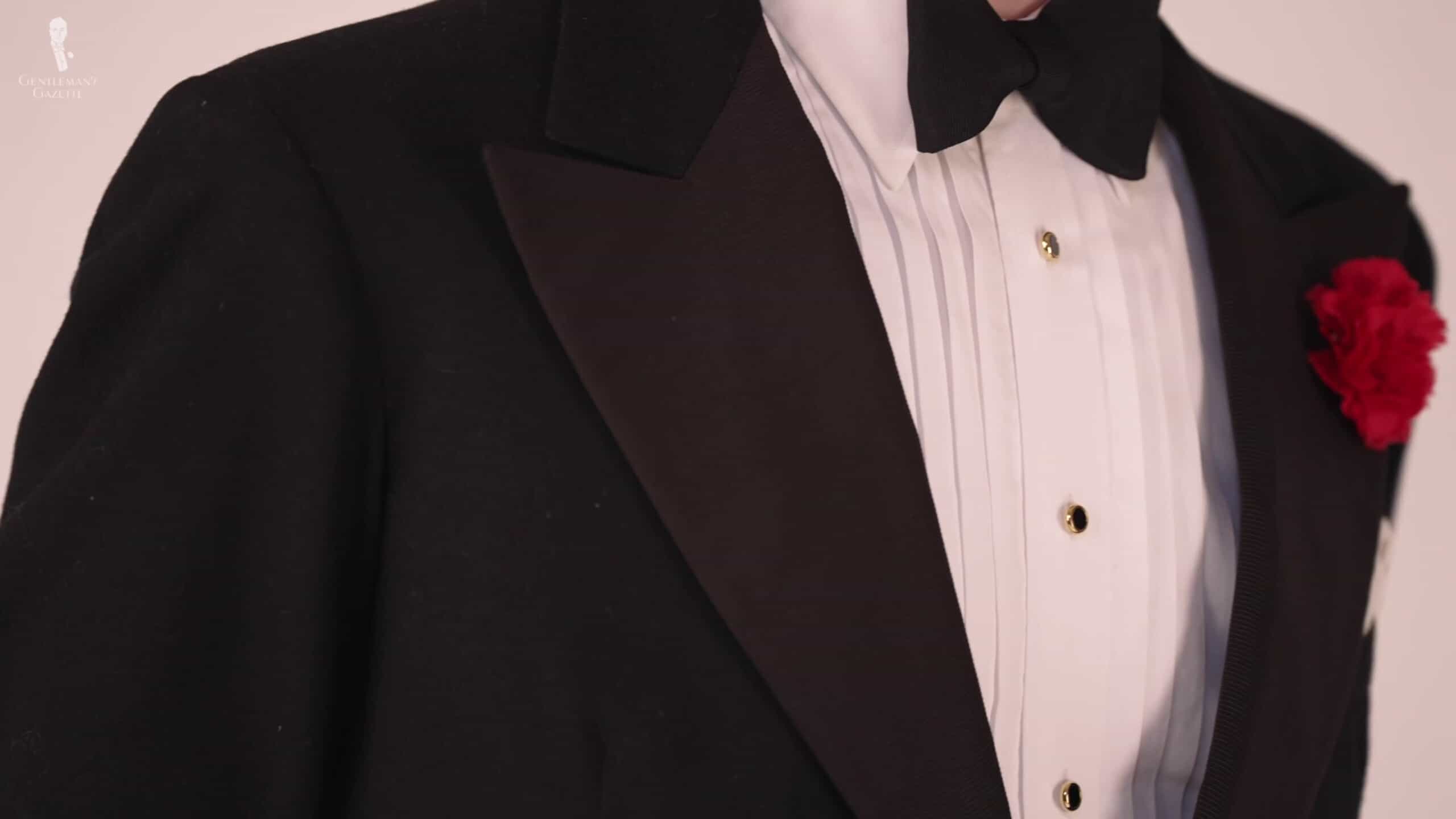
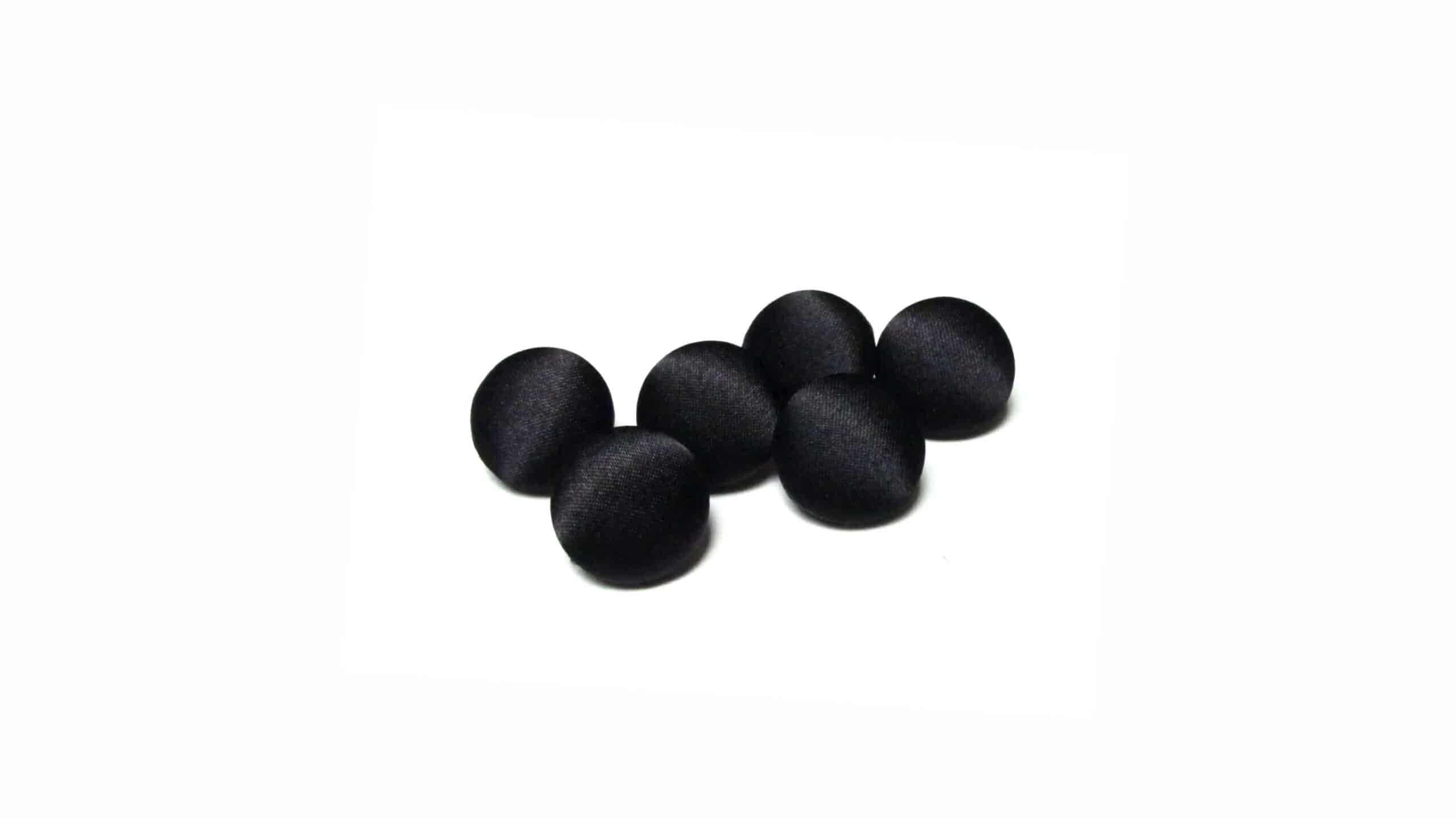
First, a tuxedo jacket should have peaked lapels or a shawl collar, usually with contrasting facings. Meanwhile, a day suit will typically have either peaked lapels or notched lapels that are not faced. In other words, they’re just in the same fabric and finish as the rest of the suit.
Tuxedo jackets should have buttons that are faced in either plane or grosgrain silk – or black bone on some vintage models, while day suit buttons can be made from many different materials in various colors.
Tuxedo jackets should have two jetted hip pockets, while day suits can feature a variety of pockets. Tuxedo jackets should have a single galon or braid often made from silk running down the outside of the trouser leg. Meanwhile, day suits don’t have any such decoration.
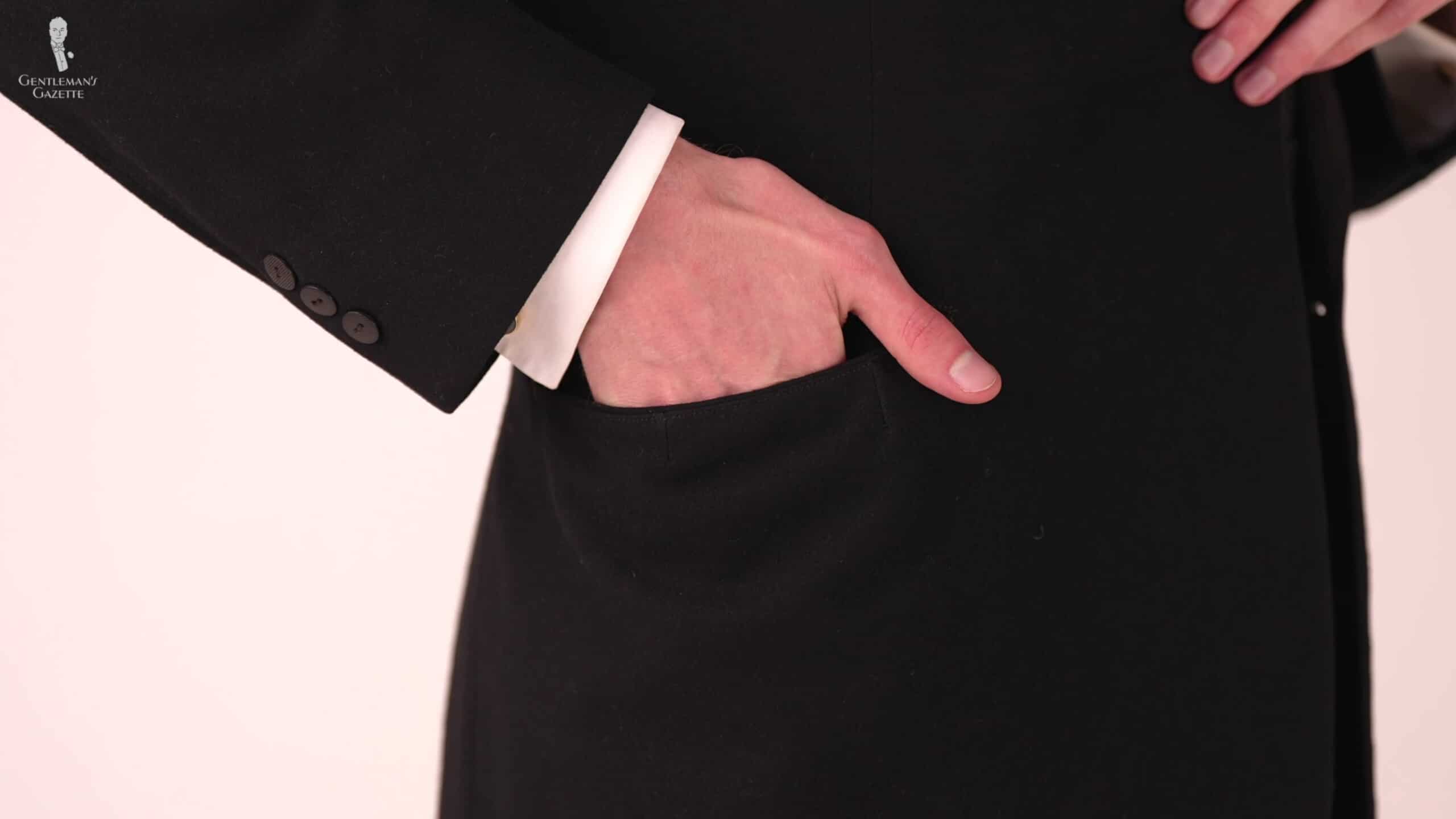
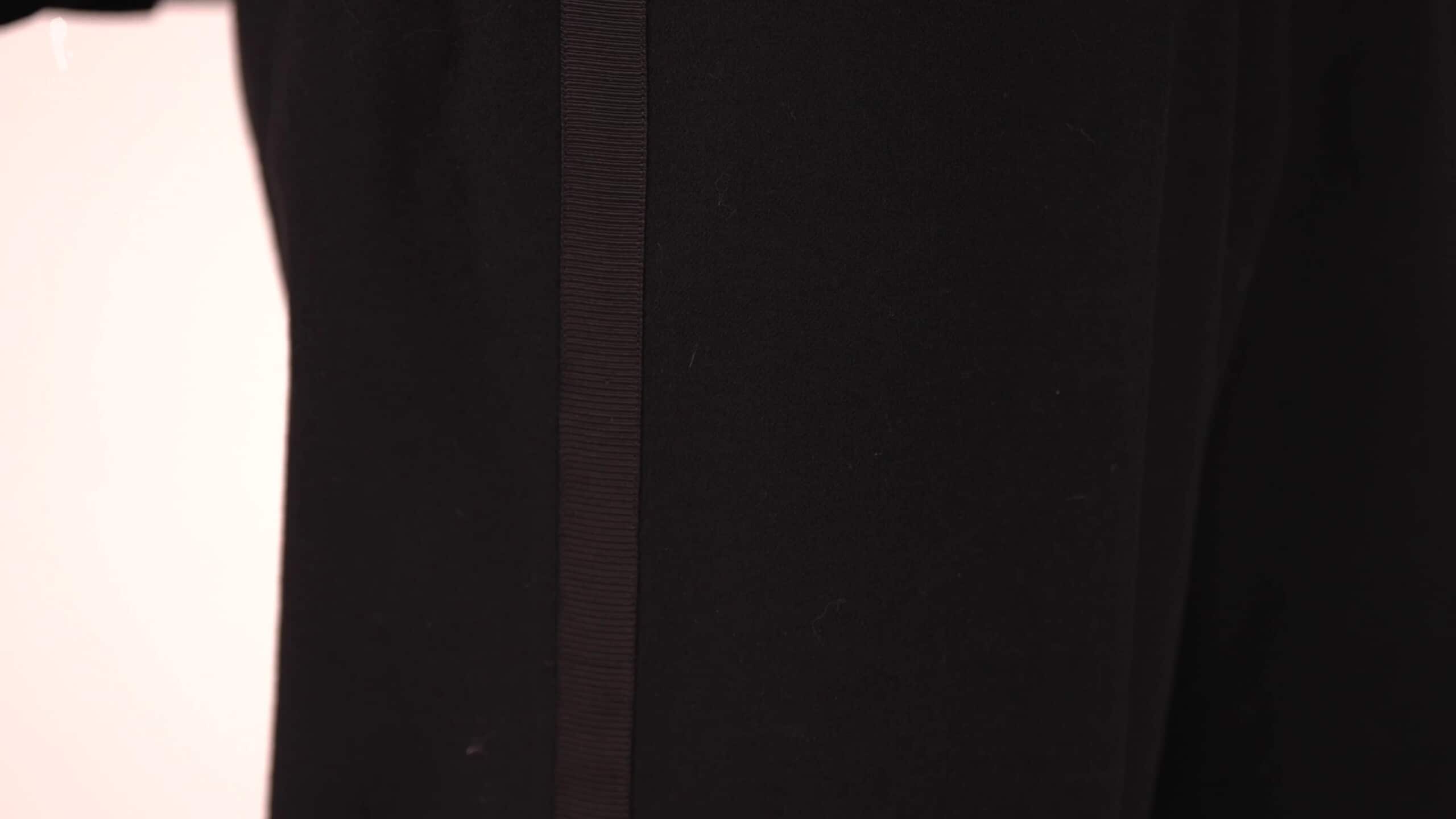
By the way, White Tie trousers, which are even more formal, should have a double galon on each leg. White Tie is also a suit; in this case, a dress suit. But, for more on White Tie, you can consult our White Tie guide.
Tuxedo trousers should not have cuffs or turn-ups at the bottom, while day suits can, but don’t have to. Dinner suits are typically made from black or black-appearing wool or mohair, while day suits can come in any number of colors and materials.
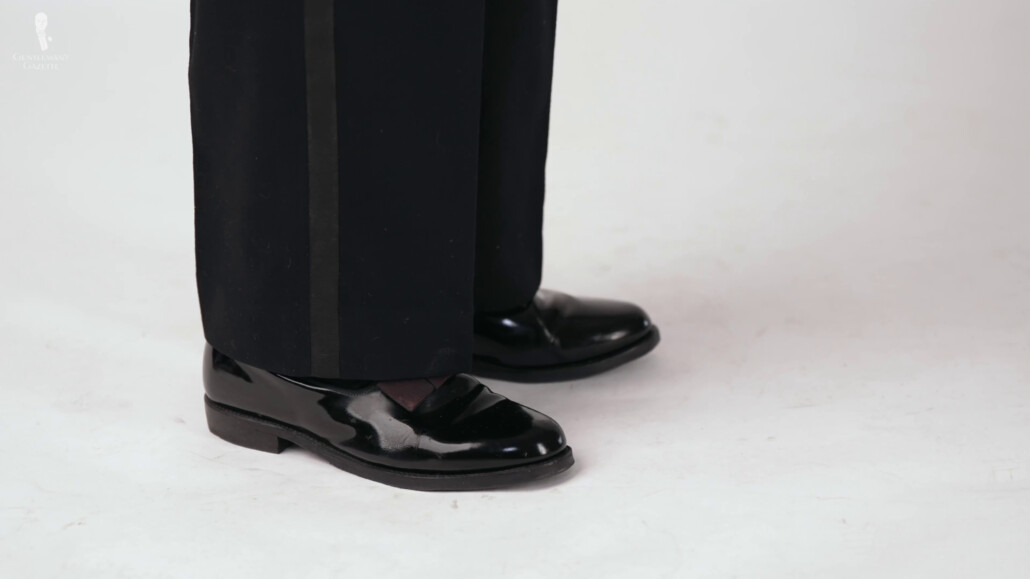
Mistake #2: Wearing the Wrong Watch
Moving on, our second mistake for today is wearing the wrong watch. Just as certain suits are suited to certain occasions, indeed, there is a time and place for every type of watch. That being said, it’s perfectly acceptable – and, in fact, even more correct – to wear no watch at all with Black Tie. But, if you really must wear a wristwatch, it’s most correct for these evening occasions to wear formal evening dress watches. In other words, what you shouldn’t wear here are sports watches.
Now, we do understand that, at least at the present moment, sports watches are extremely popular and, indeed, if you’ve invested quite a bit of money in an expensive sports watch, it’s only natural to want to show it off with your Black Tie ensembles. But, the typical features of sports watches – like metallic body materials, chunky bracelets, and oversized, sometimes bulbous faces – are overall at odds with the sleek, minimalistic intent of true Black Tie. Therefore, rather than risking spoiling the lines of your dinner suit ensemble, you’re better off wearing a true dress watch or no watch at all.
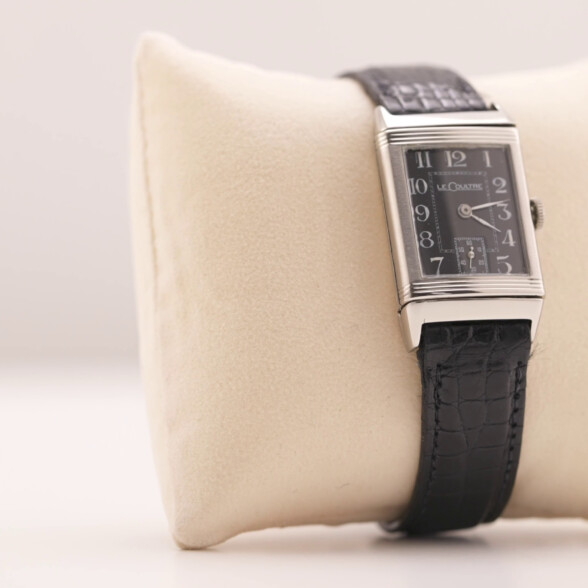
Evening Dress Watch
It’s perfectly acceptable to wear no watch at all with Black Tie, but if you really must wear one, a formal evening dress watch would be most correct.
We also know that everyone’s favorite MI6 agent has also more recently taken to wearing sports watches with his Black Tie ensembles. But, this is primarily for reasons of product placement and also because of the necessities of the plot. After all, a built-in laser is a much better complication for a sports watch than a dress watch.
Mistake #3: Wearing the Wrong Shoes
When wearing Black Tie, you always want to put your best foot forward, and this is achieved most easily by wearing the correct footwear. Traditionally, a formal evening shoe called an “opera pump” was the sartorial standard for both Black Tie and White Tie. And while it’s mostly consigned to White Tie these days, it still certainly can be worn with Black Tie.
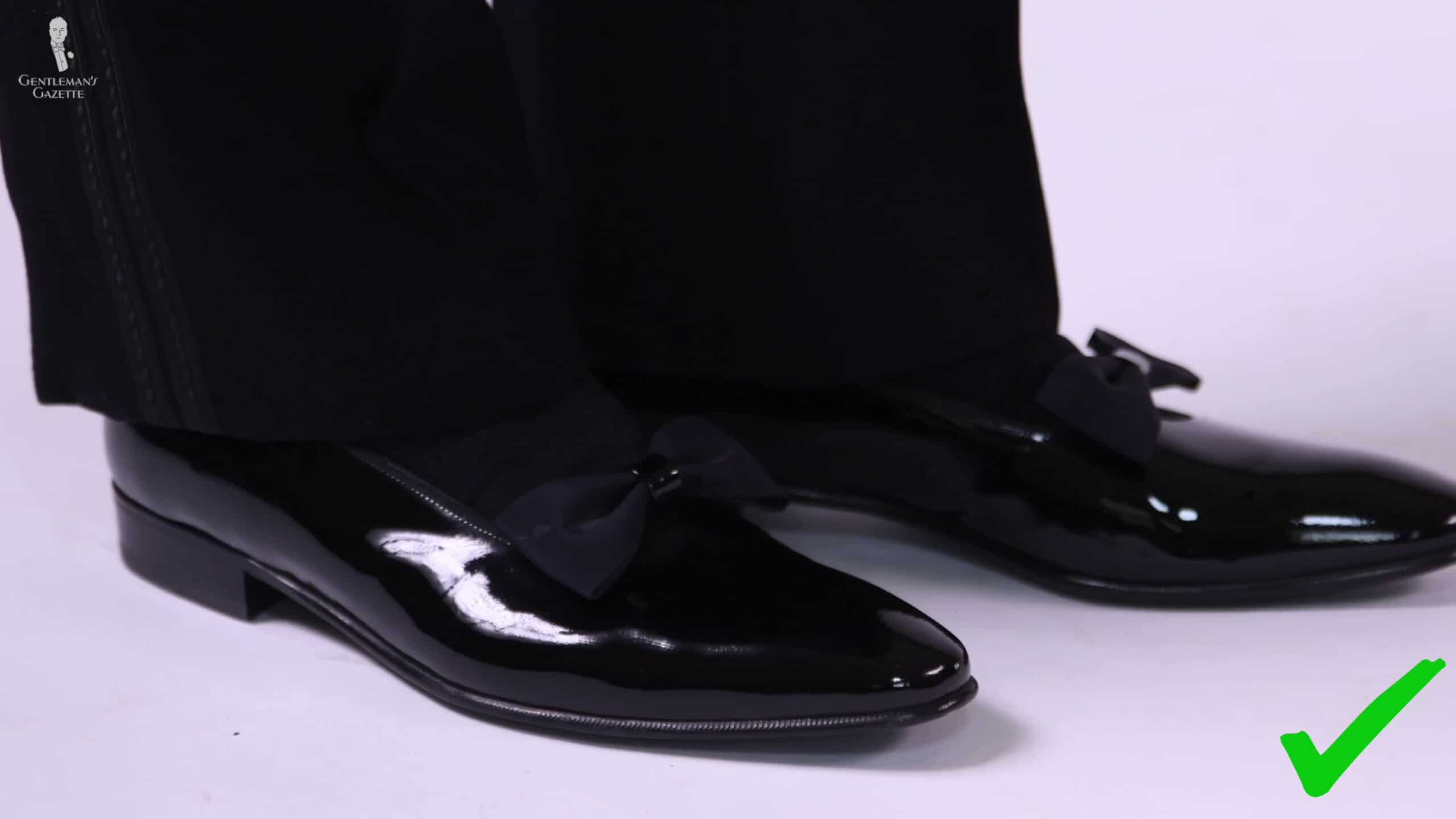
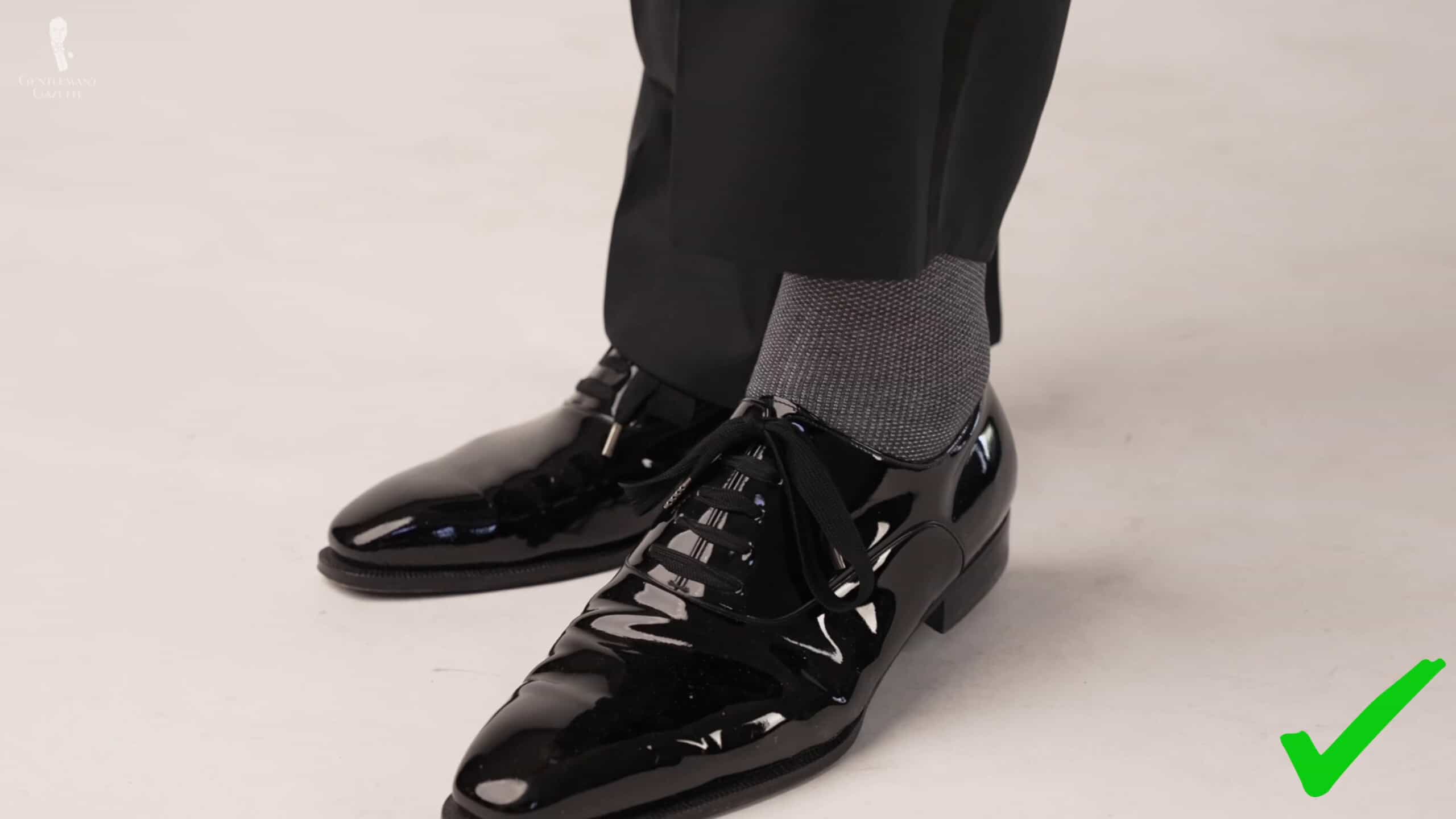
Nowadays, you’re most commonly going to see a plane-toed, black Oxford with Black Tie ensembles. And whether an Oxford or an opera pump, patent leather is the correct material choice. In the case of Oxfords, they can be styled more traditionally with multiple leather panels, just without a toe cap, or they can also be styled in a whole-cut appearance.
Recently, velvet slippers have become very popular as Black Tie footwear. However, because they are more casual, they are more appropriate for alternative Black Tie looks or the Black Tie optional dress code.
Black Tie Optional Dress Code, Explained
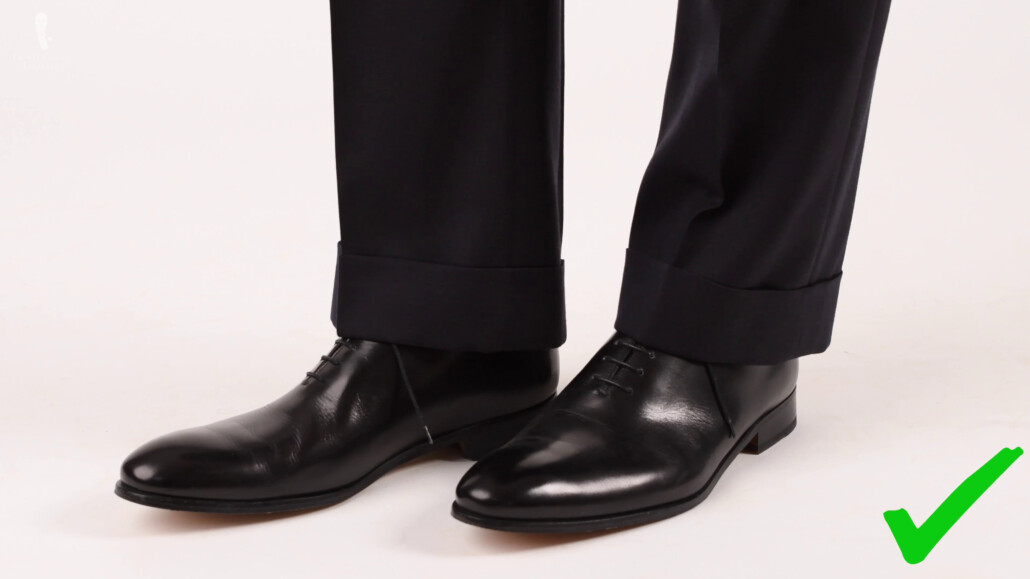
W understand that quality shoes can be expensive, so if you’d rather not shell out the cash for the formal shoe styles we mentioned above, you can substitute the most formal of business shoes. These would be very well-shined, non-brogued, cap toe or whole cut Oxfords in calfskin or cordovan leather, and yes, they must be black.
Whether you’re wearing these business shoes or the patent leather Oxfords, be sure to complete your look with a pair of evening shoelaces in a finish that match your bow tie, cummerbund, and lapel facings, as well as formal evening socks in black silk.
Mistake #4: Wearing the Wrong Shirt
Based on our previous points, you can probably guess our next mistake: confusing a day shirt for an evening shirt. The modern shirt for Black Tie is a white shirt, formal in style that evolved from the even more formal shirt styles that are needed for White Tie. These White Tie shirts feature detachable, wing collars, as well as shirt bibs and cuffs that are made from Marcella pique.
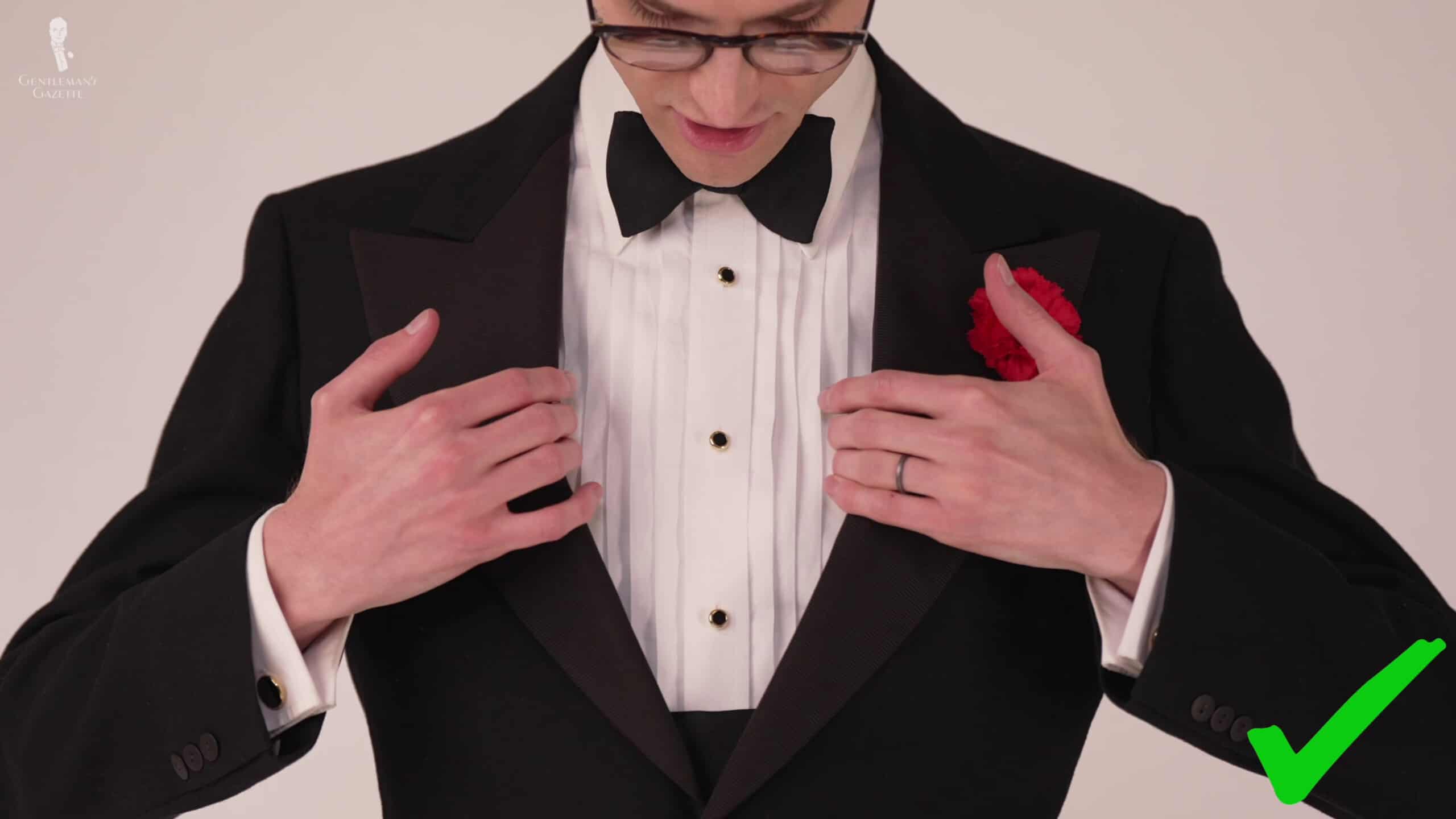
During the early 20th century, the Black Tie shirt replaced that stiff Marcella bib with a pleated shirt front, but it still took studs instead of having conventional buttons. And while early Black Tie shirts could still feature detachable wing collars today, you’re most likely to see attached, turn-down collar styles.
Note, though, that many contemporary Black Tie shirts you’re going to see on sale today will feature unusual details that are at odds with the more sedate character of classic Black Tie. These will include things like creative pleats, graphic decorations, and those supposedly handy, but really just clunky convertible barrel cuffs. All of which really have no place on a classic Black Tie shirt. And while both White Tie and Black Tie shirts take cufflinks, White Tie shirts have single cuffs, whereas Black Tie shirts have double cuffs also called “French cuffs.”
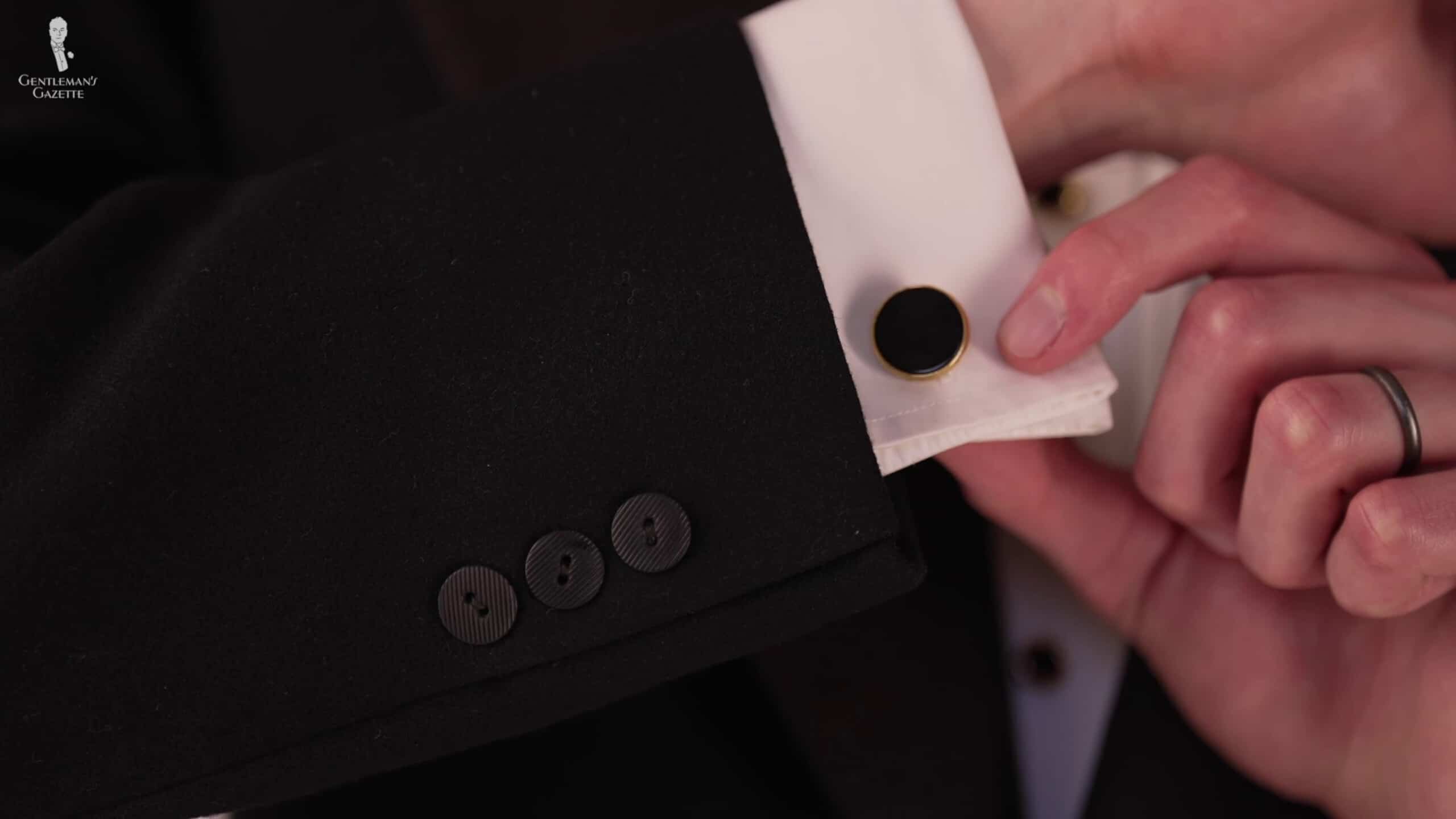
Mistake #5: Wearing the Wrong Tie
Just in case you weren’t already aware, the “tie” in “Black Tie” refers explicitly to a black bow tie. In other words, it just isn’t proper to substitute a conventional long necktie, even if that tie is black.
A black bow tie shows off your evening shirt, displaying the white expanse of the shirt to help contrast against the black of the rest of your ensemble and clearly displays your shirt studs. Meanwhile, a conventional necktie would cover much of this detail. Black neckties also lack the myriad stylistic options available to you with black bow ties.
Contrary to what’s often shown in modern depictions, classic black bow ties were available in a variety of styles and materials to suit different face shapes. So, when preparing your Black Tie ensemble, you should relish the opportunity to sift through the many bow tie options available to you, from bat wings to butterflies and satins to grosgrains and even single-ended models.
Whenever you choose, though, do make sure that you’re actually tying your black bow tie yourself and not going with a pre-tied model. If you need some guidance, you can consult our how-to guide.
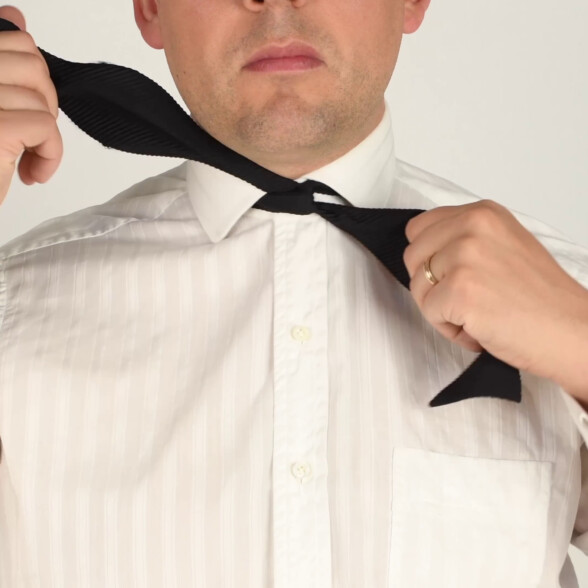
Always tie your own bow tie!
Mistake #6: Renting a Tuxedo
If you don’t regularly attend Black Tie events, spending money on a classic Black Tie ensemble could seem wasteful, and it might be tempting to rent instead. But, the fact of the matter is, if you attend even one Black Tie event a year – and, really, we’d be tempted to say even one Black Tie event every few years – it will ultimately make more sense for you to buy your own ensemble.
Of course, with every Black Tie event you attend, the rental fees will build up over time, and they will eventually exceed the cost of just buying an ensemble. And even if owning a Black Tie ensemble didn’t make better economical sense, it would certainly still make better stylistic sense. We already have an entire guide about the dangers and pitfalls of renting a tuxedo, but we feel that this one image speaks for itself.
Rental Tuxedos: How Bad Are They? – Honest Reviews
Rental tuxedos are invariably poorly fitted, usually made from low-quality materials, and regularly poorly styled as well. They’re typically either going to be too broad to accommodate men of variable girth or too skinny to satisfy modern fashion trends. So, you’re better off acquiring your own ensemble fitted to your own person.
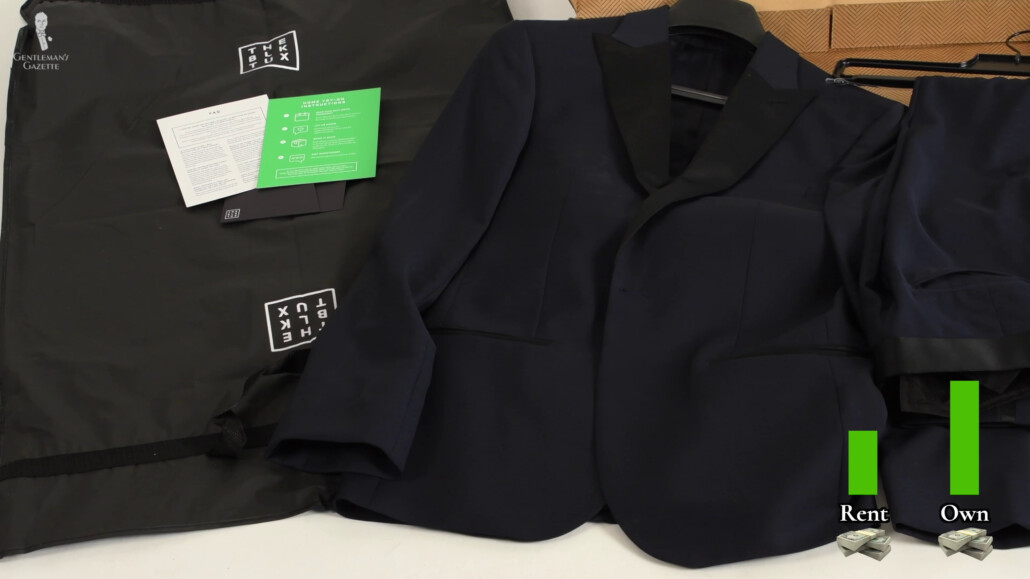
If money is tight, you can take advantage of second-hand shopping, using our tips to help you find the perfect ensembles. And as a bonus, the heavier fabrics used in vintage evening wear are going to drape better than almost any modern fabric will, flattering your form even more. And to make the outfit go even further and improve cost-per-wear, you can experiment with separating the jacket from the trousers and wearing them individually in different dress codes, like creative Black Tie, Black Tie optional, or warm weather Black Tie.
Mistake #7: Focusing Only on the “Black” in “Black Tie”
We said earlier that the black bow tie is central to the Black Tie dress code, but don’t think that this means that the color should dominate your entire ensemble. Ever since the 1990s and exploding in popularity in the 2010s, there has been an increasing interest in monochromatic Black Tie looks, usually championed by celebrities.
Presumably, these outfits are intended to look sleek and cool, but, at least in our opinion, they come off more just looking trendy and boring; neither of which is very classic. We go into more detail about why black is massively overrated in menswear, but this is especially true for evening wear, where the black of the jacket and trousers are specifically meant to contrast against the white of the shirt, as well as things like the waistcoat or pocket square and other hints of color like a red boutonniere or gold cufflinks.
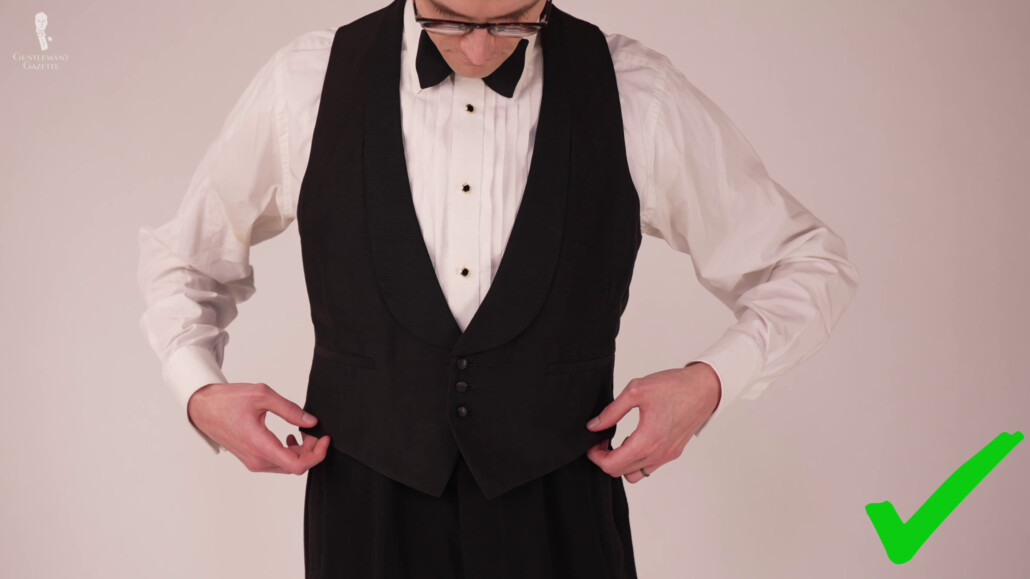
Meanwhile, wearing all black ruins this unique effect and transforms the rarefied quality of Black Tie into something more befitting an undertaker or, perhaps, John Wick.
Mistake #8: Mixing Up Midnight Blue
Light from modern bulbs of a certain lumen factor can be absorbed by genuine black garments in such a way as to give them a sludgy gray or green cast.
In the 20th century, this problem was solved by the adoption of midnight blue. This was an extremely dark shade of blue that very closely resembled black, but reflected just enough artificial light to avoid any unpleasant optical illusions. Indeed, it was said at the time to be almost “blacker than black.”
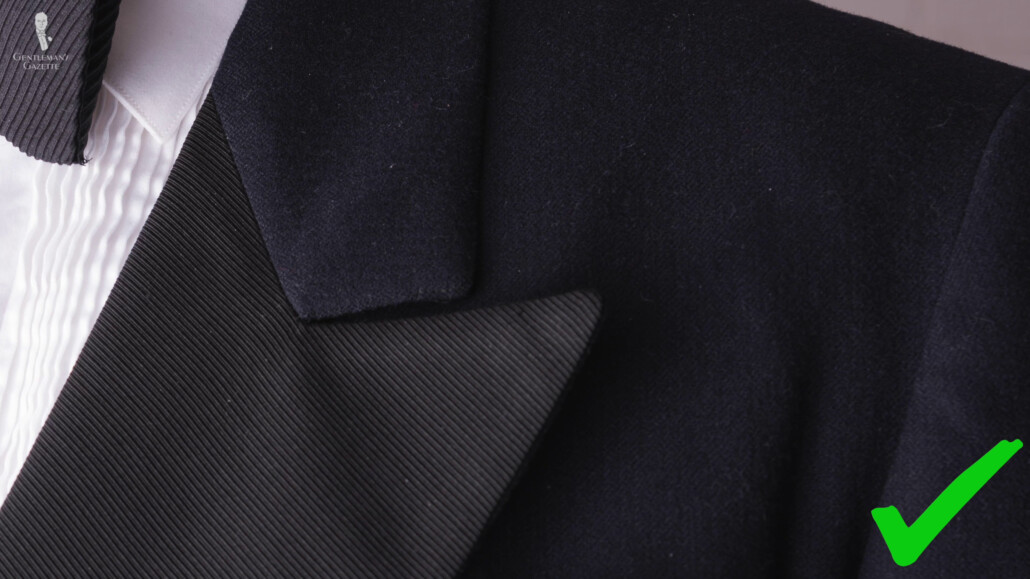
Midnight blue has remained a popular choice for formal menswear since its introduction, and because it so closely resembles black, it’s still a stylish alternative for your Black Tie ensembles. However, the slow creep of lighter and lighter shades into modern Black Tie looks is less elegant. This is clearly high noon blue, not midnight blue. In other words, if it’s obvious that your midnight blue isn’t black, then you’re probably not wearing midnight blue.
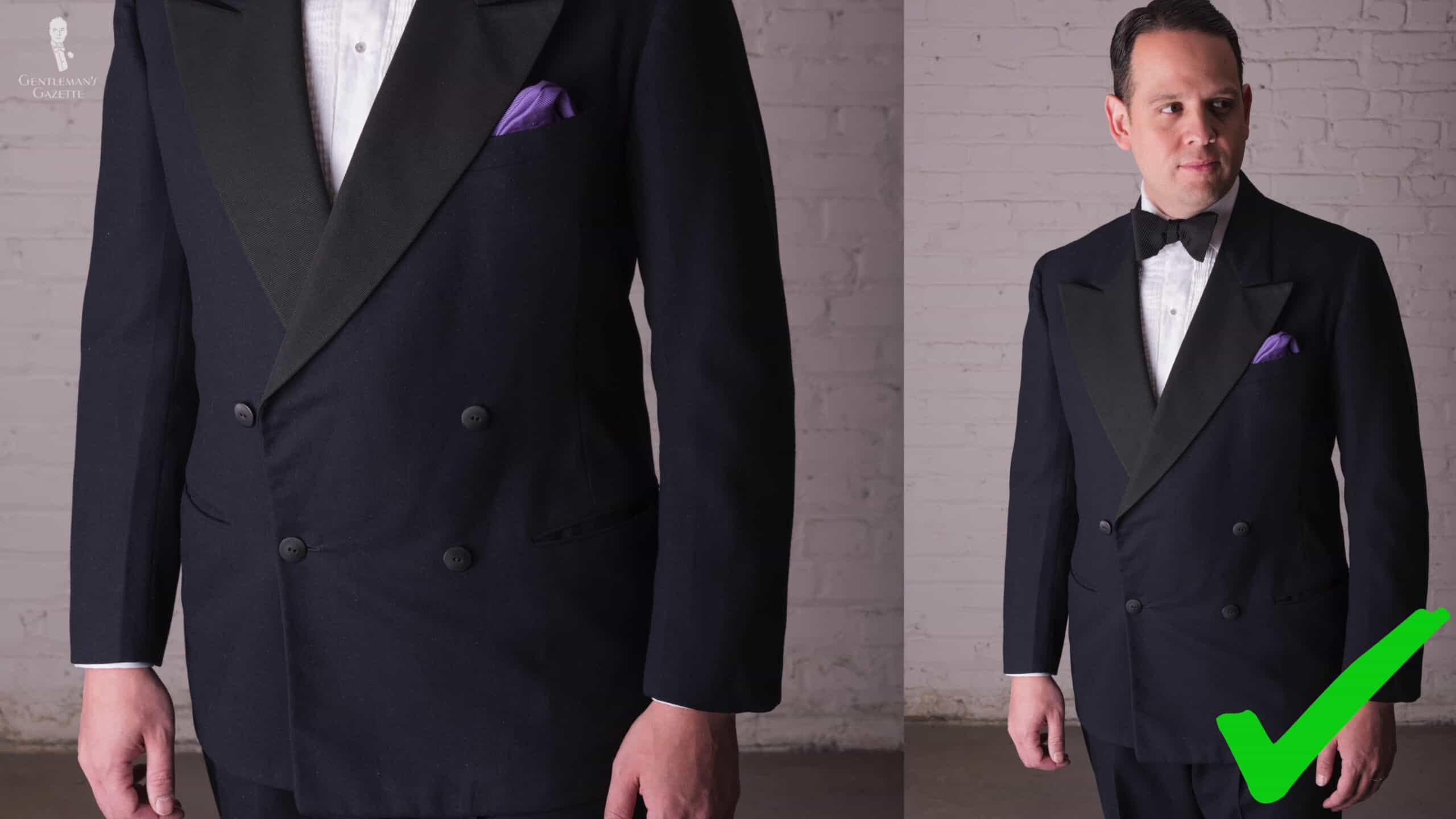
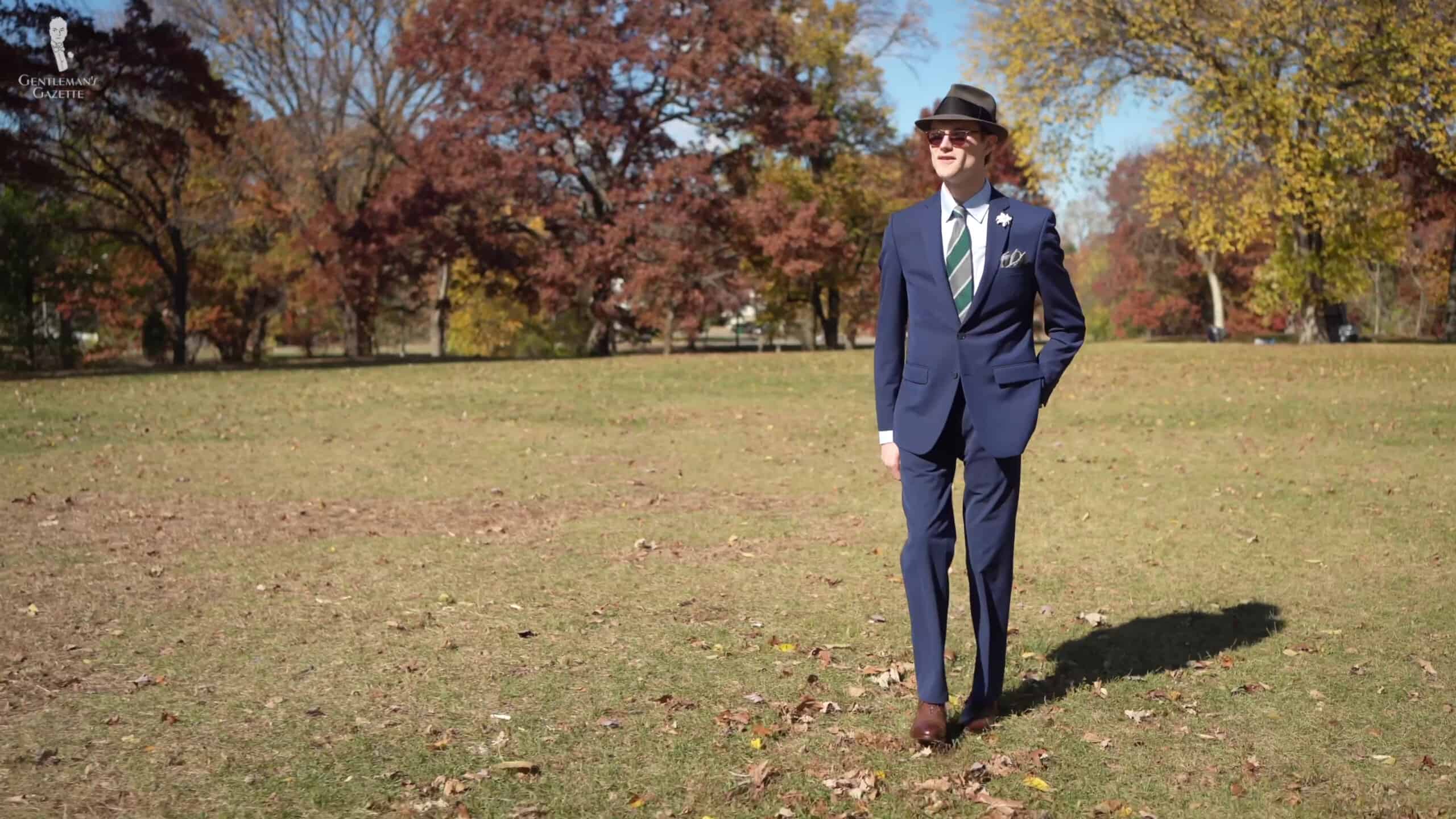
Ultimately, of course, you have free reign to select a dinner jacket in whatever color you so desire. But, if you want to cultivate a classic look, save the lighter shades for when you’re under a sunny blue sky and wear true midnight blue at those evening soirees.
Mistake #9: Disregarding Details
In addition to the broad strokes like jackets and trousers, a proper black tie ensemble also features several small details that take the outfit from acceptable to exceptional. In addition to the aforementioned evening socks and shoelaces, there are also other essential pieces like cufflinks and studs that will provide a metallic luster to your outfit as well as doing the necessary work of keeping your shirt front and cuffs closed. Other details might not serve as vital a practical purpose, but they’re no less essential if you want to look good.
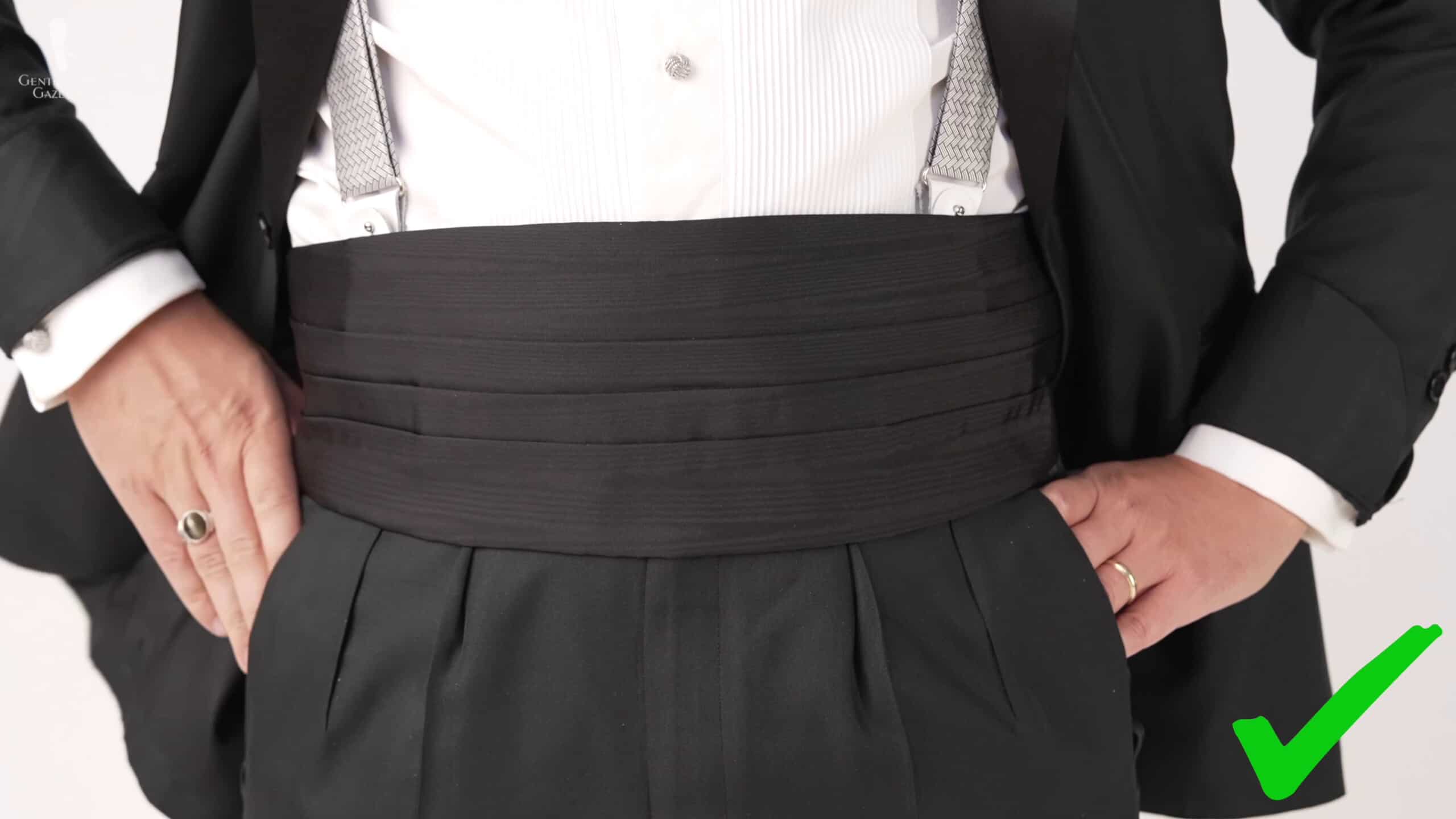
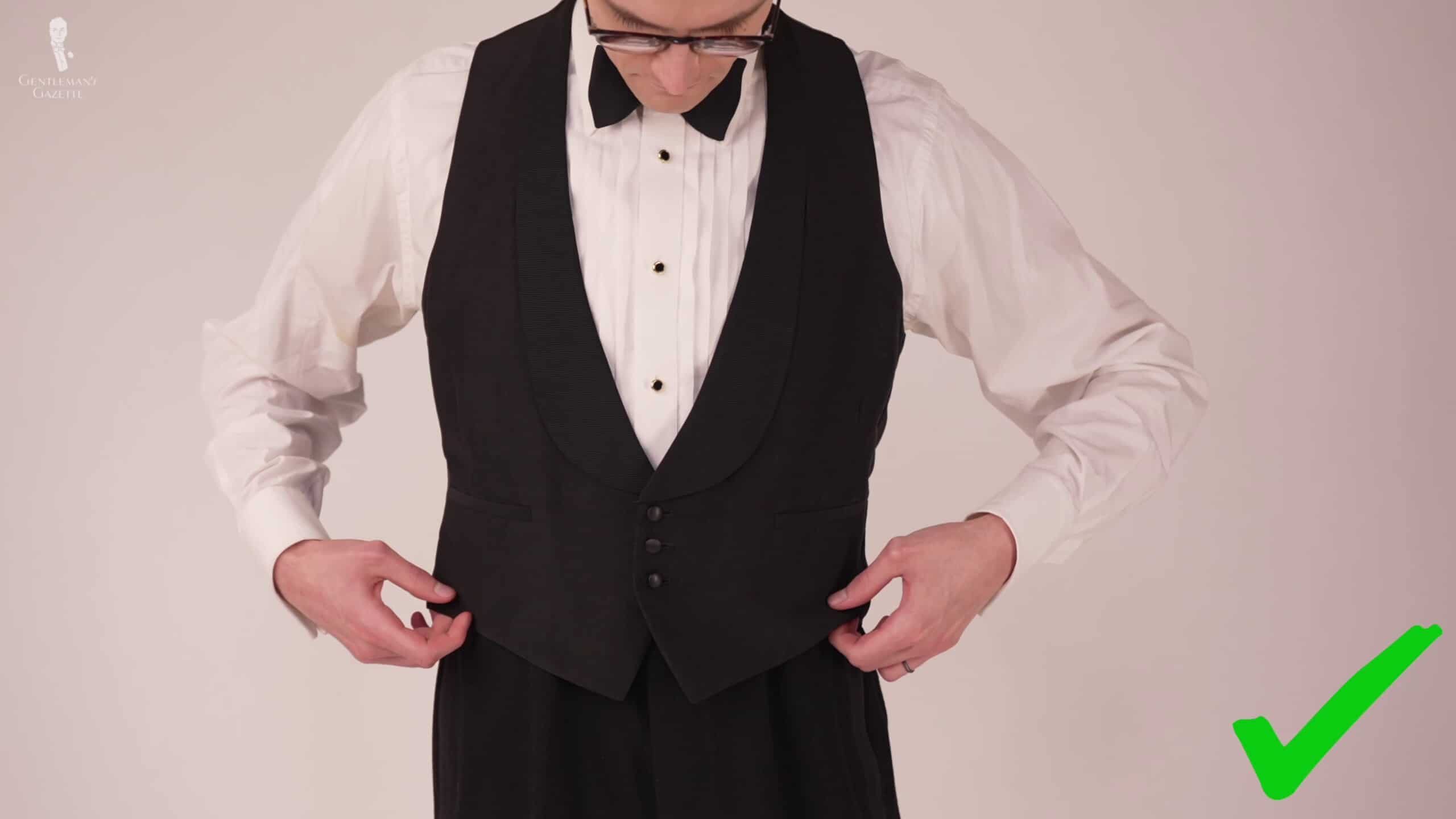
If you’re going to expose your waist at any point in the evening, it needs to have a proper waist covering – either a cummerbund or an evening waistcoat. And we do mean an “evening waistcoat,” not just a black day waistcoat with its considerably higher button stance. And, of course, never wear a cummerbund and an evening waistcoat at the same time. Meanwhile, if you’re wearing a double-breasted jacket, you can actually skip the waist coverings entirely, provided you keep your jacket closed at all times, which by the way, you should.
Speaking of keeping your jacket buttoned, if you remove your jacket because you’re hot or stuffy, you’re going to expose several of the underpinnings of your outfit like stays, clasps, belts, or suspenders, which are going to ruin the clean lines and really the magic of your look.
Of course, we understand that, in many locations, it can get very hot even for Black Tie gatherings. But, to preserve the elegance of Black Tie in these conditions, consider wearing warm weather Black Tie alternatives like light-colored dinner jackets in tropical-weight wools to feel cool while also looking your coolest.
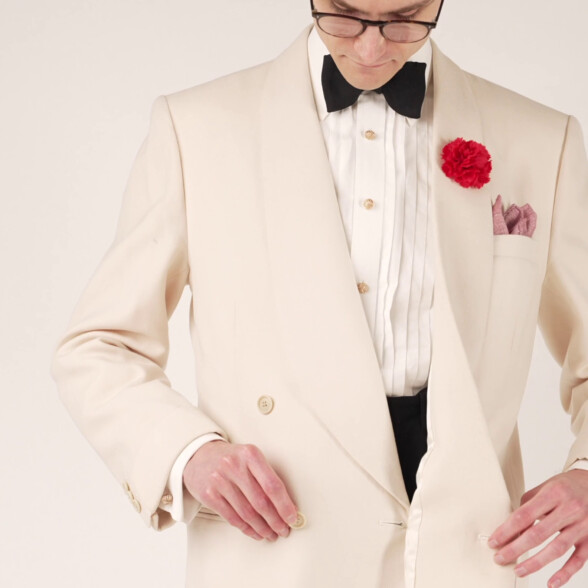
Black Tie Alternatives
Preserve the elegance of Black Tie by wearing light-colored Black Tie alternatives when in tropical countries or during warmer weather.
And speaking of these substitutions, while Black Tie is fairly standardized as a dress code, do try to take the opportunity to individualize or provide a bit more character to your outfit where you can. You can inject a bit of personality with things like a colorful boutonniere or a creative pocket square fold.
You could also try formal outerwear on for size like a satin-silk evening scarf and a Homburg hat in cooler weather or a straw boater in warmer weather. When considering these finer details, ensure you don’t miss any basics like removing the tack stitching from your jacket. Trust us, that’s not supposed to be there after you buy it.
Mistake #10: Wearing Loud Black Tie Instead of Proud Black Tie
A major component of contemporary fashion is attempting to stand out from the crowd by being the flashiest or glitziest. And, of course, there’s nothing wrong with that.
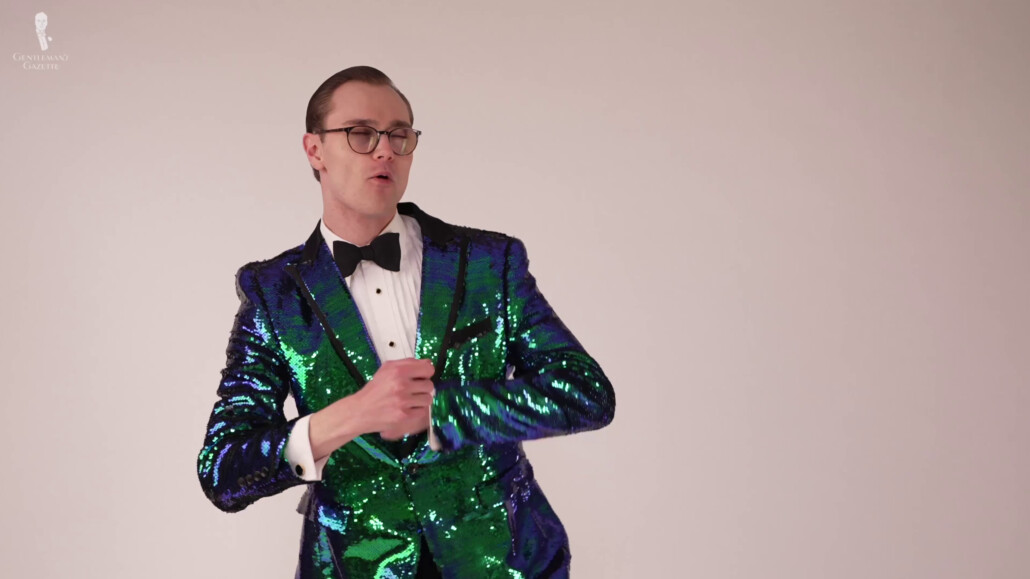
As you might imagine, this exuberant approach doesn’t gel fully with the classic style, so it’s not something that we, here at the Gentleman’s Gazette, will regularly pursue. In our opinion, flamboyant additions – like bold colors, feathers, sequins, or jacquard – distract from the fundamental principles of classic Black Tie, which is to say, a time-tested, sedate ensemble that encourages subtle personalization within a refined framework.
One of the original goals of the uniformity of both Black Tie and White Tie is that gentlemen wouldn’t have to worry about what they or the other men present were wearing. Classic Black Tie ensures that you’re never going to be overwhelmed by your clothes, leaving you instead to be overwhelmed by the evening.
The Black Tie Guide
Conclusion
So, if forewarned is forearmed, you’ve now got access to an arsenal of information sure to defeat those pesky Black Tie mistakes that can ruin a classic ensemble. And, of course, we hope that being aware of these mistakes will encourage you to wear Black Tie more often because the worst mistake when it comes to Black Tie is not wearing it at all.
Are there any other mistakes you think we missed today? If so, be sure to leave them in the comments below.
Outfit Rundown
Today, I am, of course, wearing a classic Black Tie ensemble that I believe exemplifies many of the standards we discussed today. This vintage ensemble dating from the late 1930s is made in heavy-weight, black wool.
The jacket is single-breasted and ventless with two jetted pockets at the hips, and it has peaked lapels finished in grosgrain silk. And rather than being faced in fabric, the button on the front and the sleeve buttons are carved in a grosgrain-like pattern.
The matching trousers are, of course, also in black, and they feature a single galon down the side in grosgrain. The trousers are held up by a pair of suspenders – also vintage, black, silk, and grosgrain.
My white shirt has a turn-down collar, a traditional pleated front, and French cuffs. I’ve inserted into it a matching set of cufflinks and studs featuring gold as the metal and onyx as the insert.
My pocket square is also vintage in plain white linen, and I’ve got it configured in a crown fold for a bit of personality. And one more vintage piece is my patent leather Opera pumps from Allen Edmonds. Their bows, by the way, are also in grosgrain silk.
Rounding out the outfit today are my accessories from Fort Belvedere. These would include our black silk evening socks, a prototype boutonniere design, which is a red carnation, and my cummerbund and bow tie, which are also in grosgrain silk. The bow tie, by the way, is one of my favorites. It’s a single-ended model that provides a crisp and elegant look.
While this tuxedo did come with its own evening waistcoat, I’ve chosen to wear it with a cummerbund today as the jacket does need a bit of tailoring to fit my body better, and I feel that, currently, it fits my frame best when I’ve got it buttoned. Therefore, a cummerbund seemed like the natural choice.
And while my boutonniere is a prototype, we offer similar models of red carnations in various sizes in the Fort Belvedere shop, as well as all of the other Fort Belvedere accessories I’m wearing today and a host of other Black Tie and White Tie accouterments.


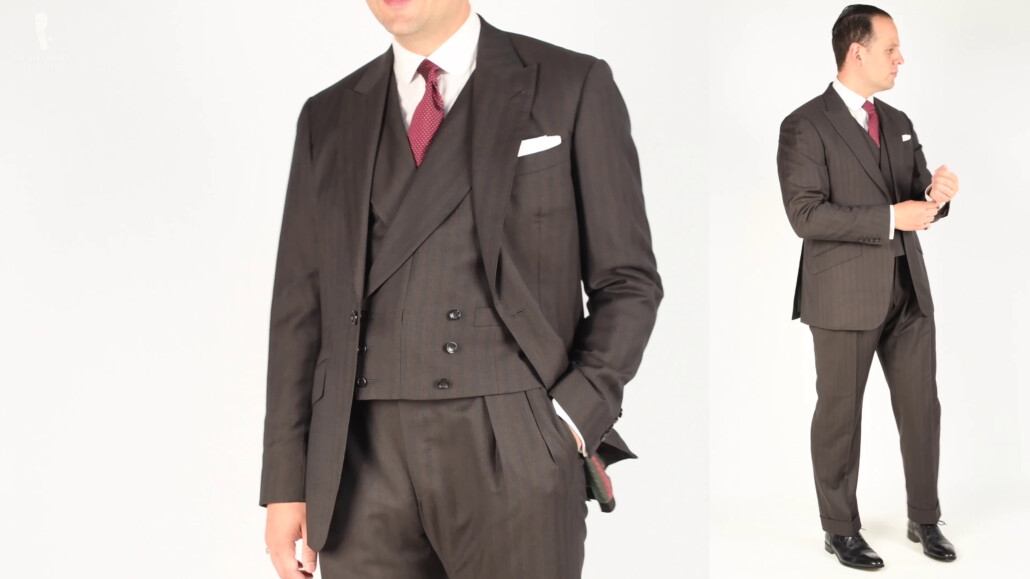
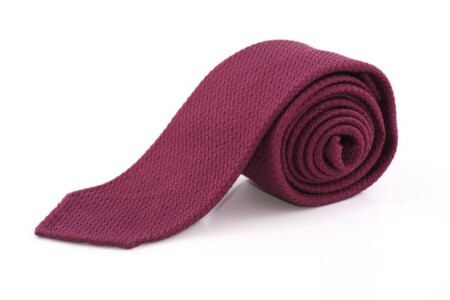
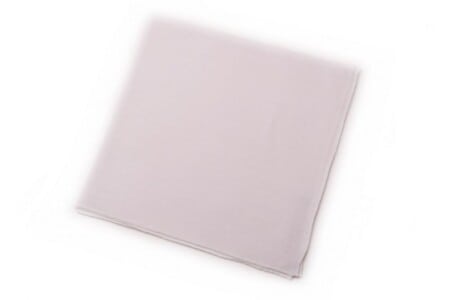
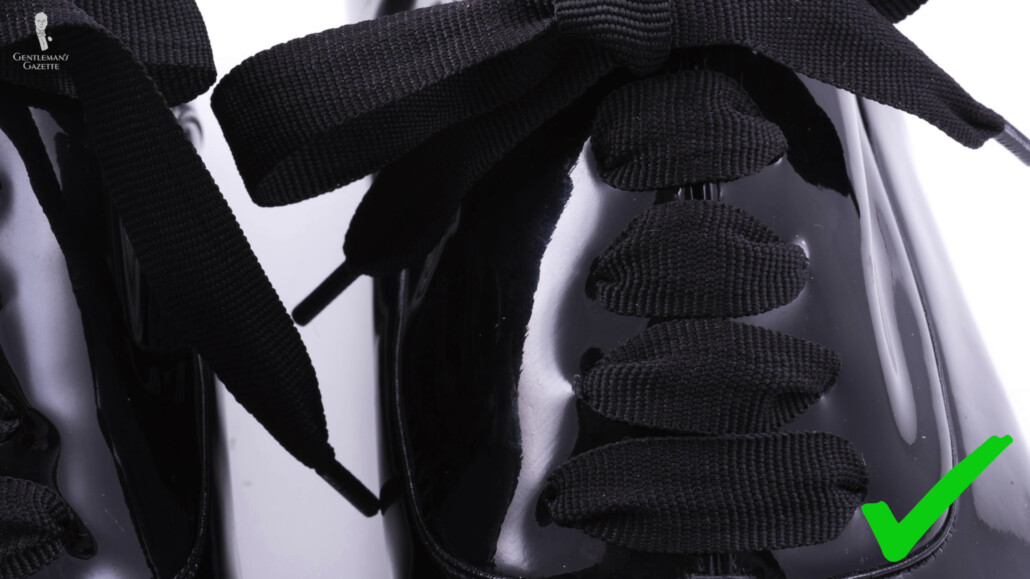
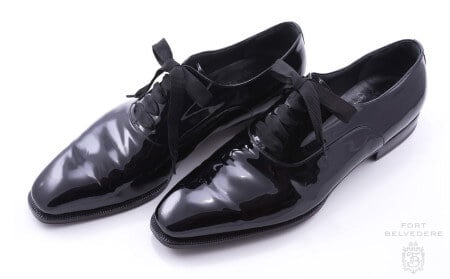
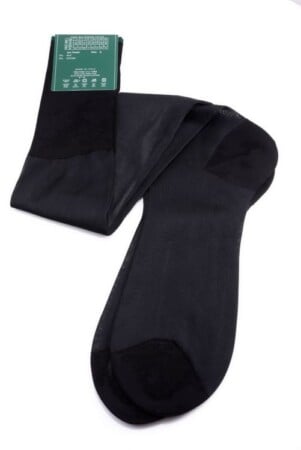
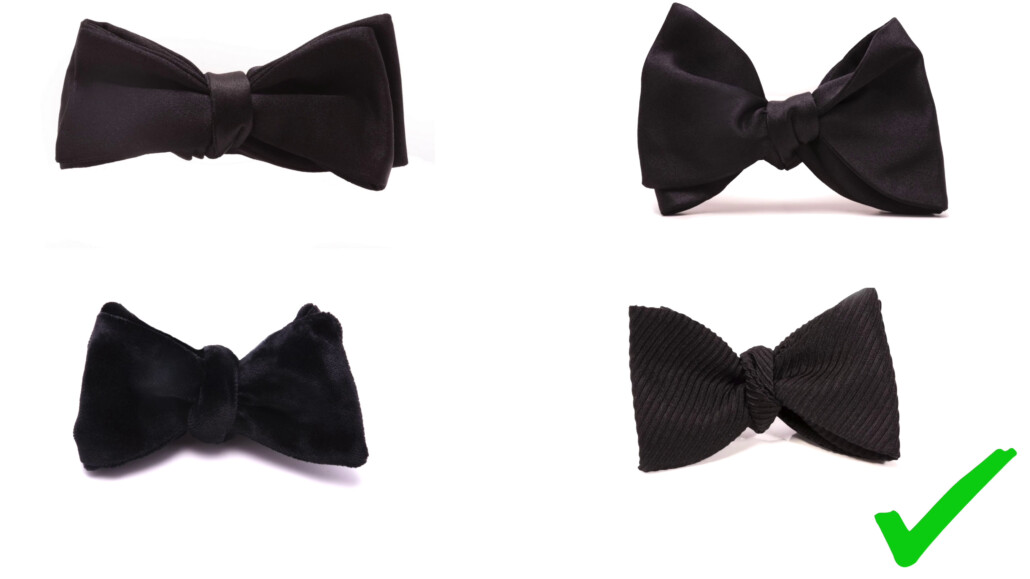
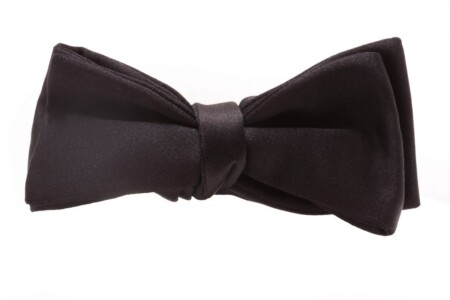
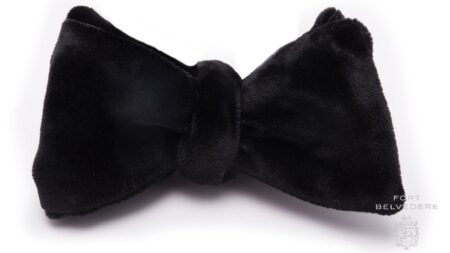
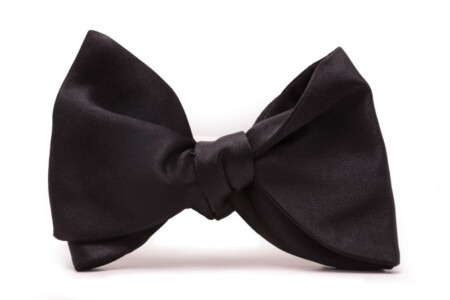
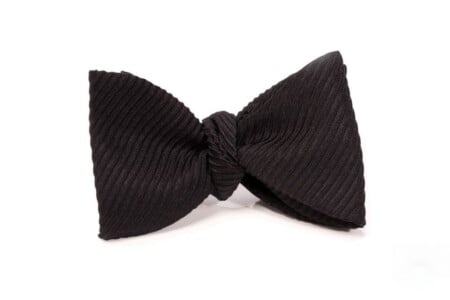
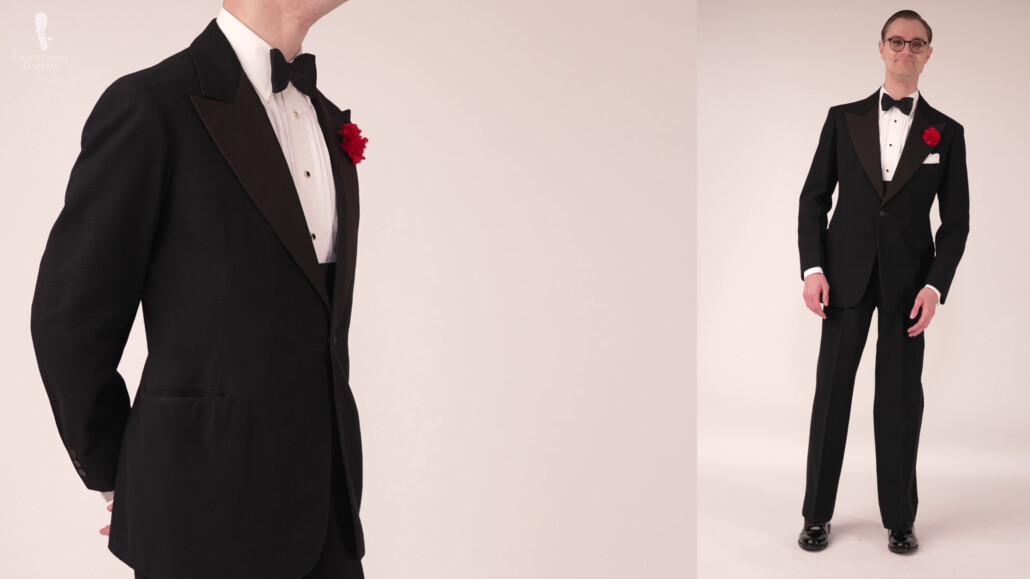
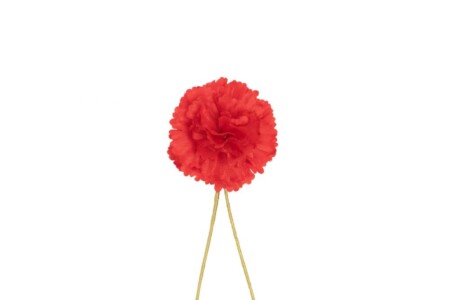
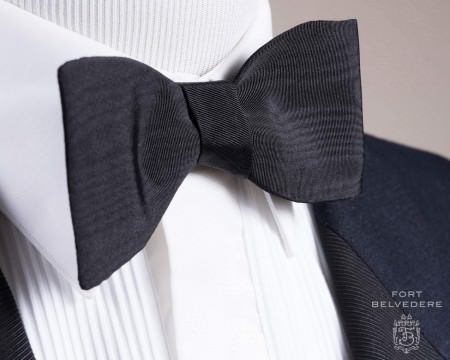
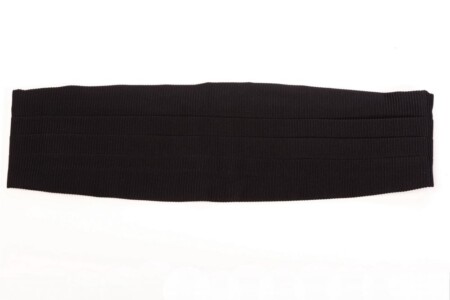
This is very helpful.
I had a 2nd hand tux 20 years ago that fit me perfectly but no longer.
Now that I know what to look for and what to look out for, I’m having trouble finding the right suit.
I just recently started looking at tuxedos online and found many with flap pockets and notched lapels. I haven’t come across a no vent jacket yet. And the “slim” fitting is still the most prevalent.
I haven’t done deep research, but could this problem be solved by upping my $$$ budget to find a suit that checks all the boxes?
Slim fit seems to be something of a fad at the moment along with those stupid tapered pants on the same cut as joggers. I think it’s also a margin thing to save money on fabric in the manufacturing cost. Upping your budget and going for custom made might be the only way to go to get what you truly want.
Hi Colin, glad to hear you found the article helpful.
I hear you regarding the notched lapels – it can be quite a minefield of questionable pieces out there! But I’m confident you’ll be able to find what you’re looking for. Perhaps including the term “peak lapel” or “shawl lapel” when you search might help? Things become a little easier for flapped pockets, as you can simply tuck the flap in for quick and easy jetted pockets! The vents are another matter, as a lot of readily available eveningwear is simply adapted from a brand’s business suit model, thus the vents remain. No vents are absolutely traditional, but I wouldn’t get too hung up on this detail – if everything else for your outfit looks great, it’s very unlikely anyone is going to point out that you don’t have a vent-less jacket.
Our black tie guide is absolutely packed with black tie knowledge and history – it’s the first place to start, and will help you understand the reasons behind black tie choices. I really hope you enjoy looking through the pages! Finally, you shouldn’t necessarily have to increase your budget if you don’t want to – Raphael has outlined his tried and tested method to get some bargains on excellent quality menswear, which you can apply in your search for your perfect black tie ensemble.
Happy hunting!
You’ve written a masterful piece on classic Black Tie. We’ll done! Just one minor tweak: it should be “free rein,“ not “free reign.”
As a bodyguard my outfits change as my client’s activities change throughout the day. While I haven’t had the need for a white tie ensemble, a tux is not uncommon. Thankfully these are scheduled events. One unique issue for me is concealing a firearm and body armor. The problem was solved by a good tailor; but finding one who understood my particular needs was harder than expected. One positive is never having to worry about removing my jacket…
I’d like to add #9a to build on the part about open jackets to reveal bits of hardware such as suspenders or #10 Discarding bits of your ensemble. This can apply to less formal ensembles like lounge suits. Put quite simply, it annoys me endlessly when at functions jackets and as much of the ensemble (bow tie/tie, waistcoat, etc) are discarded (+/- rolled up sleeves) so attendees are dressed as informally as they can in their ensemble without actually stripping down to their underpants. At a wedding, I saw one man unbutton his shirt all the way without actually removing it while another brought running shoes to change into. I’m half expecting the next function or event I go to for men to start wearing shorts and a t-shirt under their outfit…because hey, it would be much more comfortable and cooler than staying dressed up. Hosts should just consider themselves grateful these men not only turned up but started out in a black tie ensemble to start with (cue eye rolling)
I wish that you included something that I learned here at GG: the uniformity of black tie allows the women’s dresses to remain the focus.